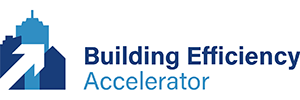
By Kayla Rakes, Lorena Pupo and Angelica Ospina
Since March 2021, WRI’s Zero Carbon Building Accelerator has been working with Consejo Colombiano de Construcción Sostenible (Colombia Green Building Council, or CCCS) to develop a national roadmap for building decarbonization, as well as city action plans for local implementation of the roadmap in Cali and Bogota, Colombia.
CCCS established nine stakeholder working groups at the beginning of the project to address each stage of the building lifecycle, enabling actions and local contexts. Prior to the development of the stakeholder working groups, the project’s Steering Committee — made up of national and local government leadership — mapped actors across sectors and across the building lifecycle to ensure all relevant stakeholders were at the table in discussing decarbonization of the built environment. Throughout this collective process, diverse stakeholders have actively participated in a series of monthly workshops, giving feedback and guidance on a baseline assessment, gap analysis, and recommendations for transformative actions.
After collecting initial input for the baseline assessment and feedback on its results, CCCS was able to compare the current situation to the desired outcome: all buildings decarbonized by 2050. With the baseline assessment in hand, CCCS began developing a gap analysis to better understand the major barriers and challenges to building decarbonization, and what transformative actions would be needed to overcome them. The team set out a strategic methodology for identifying and prioritizing transformative actions to be included in a recommendations report and ultimately, the national roadmap.
Preliminary Gap Analysis Research
To begin the gap analysis investigation, CCCS relied heavily on international touchstones to inform how building decarbonization could be approached in Colombia. The team examined existing national and subnational frameworks to compile definitions and study actions already in use globally. This initial research was the basis of the gap analysis.
Excerpt of References
Excerpt of References
A Methodology for Evaluating Transformative Actions
Once CCCS compiled the list of transformative actions used internationally, the team evaluated each action’s current status in Colombia. The team categorized actions based on the GlobalABC’s Global Roadmap’s Action Areas, which is in line with the division of the stakeholder working groups and also included country-specific interests. The team created a scale to evaluate the status of each transformative action in each enabler category1, with 0 generally being nonexistent to 5 being fully implemented and monitored. The team also evaluated actions based on cross-cutting themes (Figure 2) established by CCCS and stakeholders, which speak to goals and climate priorities established by the national government. These cross-cutting themes were particularly useful for integrating equity and inclusion into the recommendations and highlighting solutions with embedded co-benefits.
Figure 1. Enablers Scale
| Development Level | Policies | Technology | Finance | Capacity building |
|---|---|---|---|---|
| 0 | No relevant policies or regulations | No tool or technology exists | No financial instrument exists | No training programs |
| 1 | There is a public policy initiative | There is a public or private initiative to implement technology | There is a public policy or financial sector initiative | There is a public policy initiative to develop capacity |
| 2 | It is regulated | There is public or private research for development | It is regulated or already exists in the market | There are some trainings and certifications provided by technical, academic, or government programs |
| 3 | It’s partially implemented | The tool/technology exists, but is not being implemented in a widespread way | It is being implemented | Generally, there are trainings and certifications provided by technical, academic, or government programs |
| 4 | Implementation is widespread | Implementation is widespread but with gaps in the best technology available | Implementation is widespread ad differentiates between sustainability levels | There are technical, academic, and professional programs dedicated to training |
| 4 | Implementation is widespread | Implementation is widespread but with gaps in the best technology available | Implementation is widespread ad differentiates between sustainability levels | There are technical, academic, and professional programs dedicated to training |
| 5 | Implemented effectively with monitoring and evaluation processes to realign and improve | Implementation is widespread with no gaps in best available technology | Enables innovative business models that consider the externalities of climate change. They only finance sustainable projects. | There are research groups dedicated public and private innovators. |
Figure 2: Cross-cutting Themes Scale
| Development Level | Job Skills2 | Equity & Inclusion3 | Consumption Habits4 | Resiliency & Risk Management5 | Habitability6 |
|---|---|---|---|---|---|
| 0 | Not included as criteria | Equity and inclusion not considered | Not included as criteria | Not included as criteria | Not included as criteria |
| 1 | There is a initiative to develop job skills | There is an initiative which includes equity and inclusion as criteria | There is an initiative that includes consumption habits as criteria | There is an initiative that includes the resilience and risk management as criteria | There is an initiative that includes habitability as criteria |
| 2 | There are some actions to develop job skills | There are some actions that include equity and inclusion as criteria | There are some actions that include consumption habits as criteria | There are some actions that include resilience and risk management as criteria | There are some actions that include habitability as criteria |
| 3 | There are various actions to develop job skills | There are various actions that include equity and inclusion as criteria | There are various actions that include the consumption habits as criteria | There are various actions that include the resilience and risk management as criteria | There are various actions that include habitability |
| 4 | There are various actions with effective implementation and monitoring and evaluation | There are various actions with effective implementation and monitoring and evaluation | There are various actions with effective implementation and monitoring and evaluation | There are various actions with effective implementation and monitoring and evaluation | There are various actions with effective implementation and monitoring and evaluation |
| 5 | Mainstreams job skills among relevant actors | Transition to a sustainable, equitable and inclusive built environment | Transforms the market and consumption habits | Transition to a resilient built environment | Transition to a healthy and comfortable built environment |
Stakeholder Feedback
Once CCCS undertook the preliminary assessment of transformative actions, the team brought it back to the stakeholder groups to get their input on the initial gap analysis. Stakeholder working groups, which were established during the baseline assessment phase of the project, were divided into subgroups based on their interests and expertise. The CCCS technical team presented the gap analysis and transformative actions to the designated groups and conducted an in-depth review of each action.
Using the scale, the subgroups examined the scale of development and compared it with the preliminary rating assigned to each category. Subgroups also evaluated transformative actions based on when they would need to be implemented to achieve short-, medium-, and long-term goals; they analyzed national- and local-level actions simultaneously. This dialogue with stakeholders helped the team validate and adjust international transformative actions so that they would be suitable to the local context in Colombia.
The gap analysis has been a crucial step in setting a clear pathway to achieving zero-carbon buildings in Colombia by 2050 and for implementation locally. The stakeholder dialogue articulated the needs and gaps in different sectors, socialized initiatives and findings, and found synergies to push the construction sector towards development that’s aligned with the country’s larger climate goals. The methodology undertaken by CCCS continues to advance the engagement process and positions the roadmap to better address the specific needs of national and subnational governments. Clearly defining transformative actions and evaluating their current status has illuminated areas that will require additional support in the transition toward decarbonization and market transformation.
Insights from the Transformative Actions
Upon completing the gap analysis, the main policy and regulatory recommendations are in energy efficiency, clean energy use, and decarbonization of the energy grid, as these will have the largest impact on reducing emissions. Short-term recommendations focus on regulatory barriers and technology accessibility issues that must be resolved in the coming years to achieve mass implementation of clean energy and energy efficiency measures in all buildings. Similarly, existing buildings are posed to be a significant challenge, as most regulations requiring water and energy savings in buildings target new construction, and do not apply to existing buildings or renovations.
The country’s largest gaps for implementing zero-carbon buildings in Colombia remain in embodied carbon, as currently there are still no clear policies or incentives that promote the development of low-carbon construction materials and systems. Colombia still relies heavily on carbon-intensive building materials like cement, concrete, steel and brick, while low-carbon wood construction systems are virtually non-existent. Very few products on the market have Life Cycle Assessment (LCA) calculations and Environmental Product Declarations (EPD), leaving the industry with limited data about emissions impacts. While construction methods don’t necessarily have to be high-tech, prefabricated or industrialized, construction systems can reduce environmental impacts while also increasing comfort and habitability. These high-tech methods are not widely available in Colombia, and the construction and operational performance of buildings suffer as a consequence.
As a part of the Zero Carbon Building Accelerator, the gap analysis is a key strategy for developing national roadmaps and city action plans in both Colombia and Turkey. This step is essential for understanding how international frameworks for building decarbonization can be applied in each country and contextualizing transformative actions to the local situation. In Colombia, the process identified the next steps in meeting building decarbonization goals while also aligning with larger, ambitious climate goals across sectors.
Footnotes
1 Enablers were identified by the GlobalABC’s GlobalABC Roadmap for Buildings and Construction 2020-2050
2 Green job skills are the knowledge, abilities, values and attitudes needed to live in, develop and support a sustainable and resource-efficient society.
3 Equity and inclusion ensure full participation and access to quality opportunities for all while respecting and valuing diversity and eliminating discrimination. It is a commitment to meeting the needs of underserved communities through policies and programs that reduce disparities while fostering places that are healthy and vibrant.
4 Building occupant consumption habits are crucial to the operation of net zero carbon buildings. As such, transformative actions should promote sustainable consumption and production habits at all stages of the building lifecycle to increase efficiency and reduce energy and water waste.
5 Resiliency in the built environment refers to the ability to continue functioning or recover quickly in the face of sudden or chronic external failure such as water shortage, power outage, or a natural disaster, while risk management refers to decreasing risks in the construction/development stage and reducing or eliminating potential hazards for the future.
6 Habitability guarantees physical safety in buildings including proper ventilation and protection against the cold, wetness, heat, wind, other threats to health and structural hazards.
